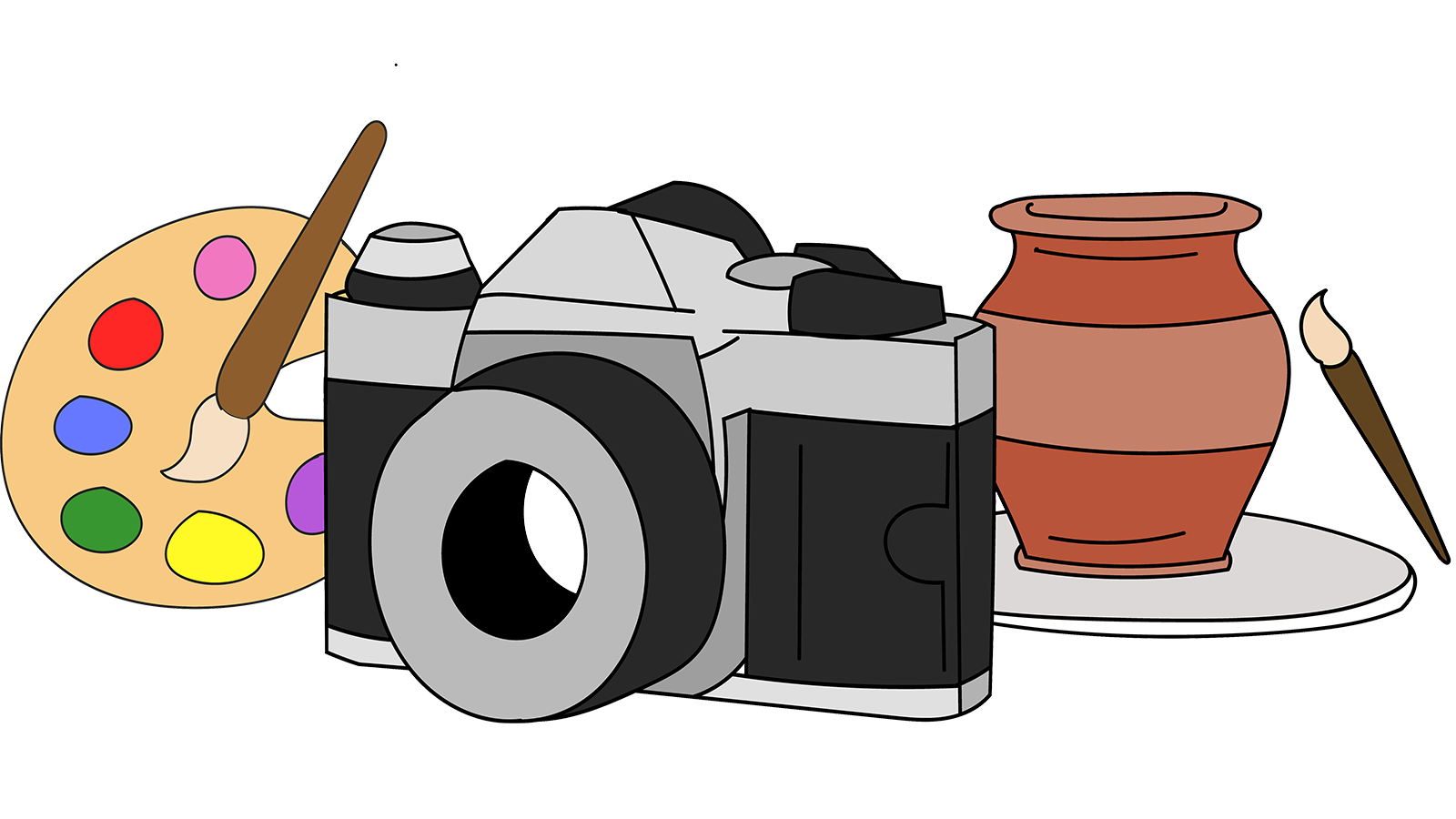COVID-19 has affected several aspects of the Belmont Hill community, including the visual arts programs; however, the faculty have adapted to the circumstances, allowing students to safely express their creativity while maintaining the enjoyment of art classes.
In Form I art, each student was given their own supplies to create each art assignment. Aspects of the class have largely remained the same, such as the Form I sketchbooks and the beloved Hero Sculpture, inspired by the Form I theme of “Heroes.” However, there were modifications to the portrait project, as each student created individual texture vocabularies rather than using a collective vocabulary, applying it to their respective portraits. They then used watercolor pencils to add color to their work.
The Ceramics class started the school year with an untraditional trash can firing at the bottom of the stairs of the Melvoin Academic Center. They then created ceramic boxes, tiles that represented each student’s characteristics and personality, and clocks for the Clock project, a staple to ceramics at Belmont Hill. A few students have recently begun throwing clay on the pottery wheel.
The Woodworking classes created Kumiko Lanterns in the first quarter. Kumiko is a Japanese woodwork technique dating back to the 8th century, which refers to grooving wooden pieces and arranging them in various geometric patterns without using nails. It serves as a form of wooden lattice decoration and requires delicacy and precision to assemble. The woodworking students currently are engineering and building kites. Mr. Kaplan, woodworking teacher and Chief of the Arts department, said, “We introduced general principles and physics of flight (lift, drag, etc.) and basic construction techniques, hoping that students will explore, investigate, and take risks to develop a unique design of their own.” Mr. Simpson is working with two students participating in independent studies in the woodshop. Grant Litchfield ‘21 and Adam Alto ‘21 are building a solid wood cabinet with drawers and a pedestal table with laminated cherry legs, respectively.
This semester, Photo 1 has been working digitally, with an emphasis on post-production skills via the programs Adobe Lightroom and Adobe Photoshop. Their assignments, which are intended to push students out of their comfort zone, have encompassed a broad range of challenging concepts. They critique each other’s photographs weekly to help develop the skills of photography interpretation and analysis. Advanced Photography was tasked with creating a cohesive body of work while maintaining a fully-developed photographic concept. In-class critiques and discussions help the students analyze each aspect of their projects and make their overall vision clearer. The students will end the course with a personalized handmade and hand-stitched photo book, a culmination of their creative visions. Mr. Duarte is also working with two seniors on independent photographic studies. Henry Moses ‘21 currently pursues analog photography, focusing on how humans leave their mark on the environment and the detritus left by various architectural projects. Caleb Sheldrick-McGrath ‘21 is creating a series of digital photos with the intention of perplexing viewers through photo manipulation in Adobe Photoshop. He combines several frames of pictures of the same subject into a single photo and positions each frame slightly differently to create a subtle effect of disarray.
COVID-19 has not affected Digital Video, and students have been able to continue to push themselves and their creative boundaries by using several techniques and conceptual skills of videography. The students are tasked with creating films of different genres and also analyze each other’s work through in-class critiquing. They also view films significant to cinematic history for inspiration and cultural context for subsequent assignments. The students have studied several notable filmmakers such as Stanley Kubrick, Paul Thomas Anderson, Spike Jonze, and Wes Anderson.
On-campus art classes require extensive preparations, but the experience for students is worth the additional work. Mr. Kaplan said, “All the projects were reworked or completely new so that we could deliver a meaningful curriculum even in a remote situation. We overhauled the spaces to accommodate workflow and distancing, and it’s paid off doubly. I’m remarkably proud of the members of the Arts department and thankful for their effort and willingness to find creative solutions to providing a great experience for hands-on learning at BHS.” Looking forward, the faculty hopes to continue to be able to provide in-person learning opportunities for art students.





